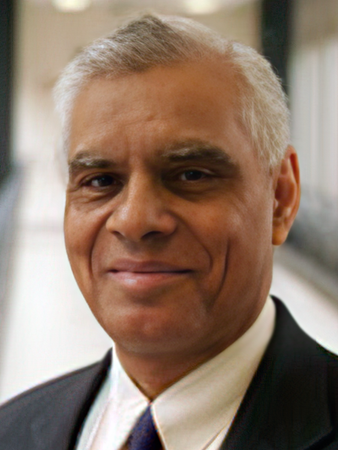COVID-19, Salt Sensing, and Beyond: Dr. Vijay Lyall’s New Book Chapter Highlights Viral Impacts on Taste Mechanisms

In a timely and important contribution, Dr. Vijay Lyall, Associate Professor in the Department of Cellular, Molecular, and Genetic Medicine at VCU, and his team authored a new book chapter titled “Effect of SARS-CoV-2 Virus S1 Protein Binding to ACE2 on ENaC Regulators in Cultured Adult Human Fungiform Taste Cells” (Medical Science: Recent Advances and Applications, BP International, September 2025).
The work addresses one of the hallmark early symptoms of COVID-19, the loss of taste, by exploring how the SARS-CoV-2 spike protein subunit S1 alters salt transduction at the cellular level. Dr. Lyall and his collaborators demonstrated that S1 binding to the ACE2 receptor disrupts the delicate balance of the renin-angiotensin-aldosterone system (RAAS), leading to changes in epithelial sodium channel (ENaC) regulation in human fungiform taste cells. Their findings suggest that RAAS components function in a complex with ENaC and TRPV1 to modulate salt sensing, and that mutated S1 binding decreases ACE2 expression in taste cells. These insights provide a mechanistic explanation for prolonged taste disturbances during infection and open new avenues for addressing taste dysfunction in viral illness.
Beyond this recent work, Dr. Lyall’s research program has made foundational advances in salt and sour taste transduction. His lab integrates electrophysiological recordings, confocal imaging, immunocytochemistry, and molecular biology to identify receptors and ion channels on taste cells responsible for detecting ions such as Na⁺, K⁺, NH₄⁺, and H⁺. A major discovery from his group was the identification of TRPV1t, a variant of the pain receptor that functions as the amiloride-insensitive salt taste receptor in the anterior tongue. This breakthrough has revealed new druggable targets for salt taste modulation, with potential applications in reducing sodium intake and improving public health outcomes.
His team also uncovered that during acid stimulation, a decrease in intracellular pH serves as the proximate signal for sour taste, while downstream activation of Na⁺/H⁺-exchanger-1 (NHE-1) enables taste cell adaptation. Together, these findings highlight the complexity of chemosensory signaling and the interplay between ion channels, intracellular pathways, and sensory nerve activation.
Dr. Lyall’s work illustrates how fundamental physiology intersects with urgent clinical challenges, from dietary health to infectious disease. His dedication to unraveling the molecular basis of taste is shaping new strategies to address taste dysfunction and advance human health.
By Anna Kovilakath
Department of CMGM
Email: Anna.Kovilakath@vcuhealth.org
Date: 8/September/2025